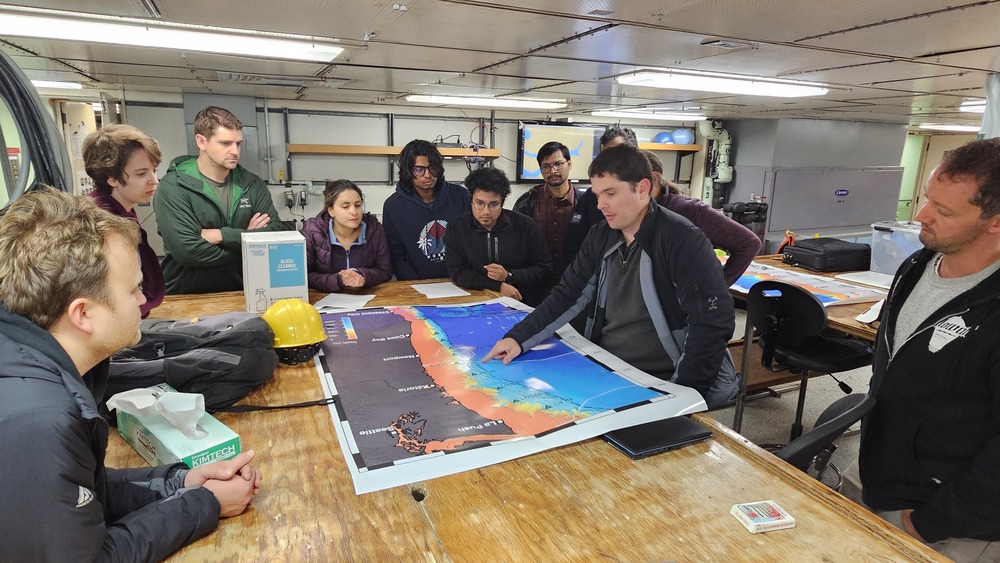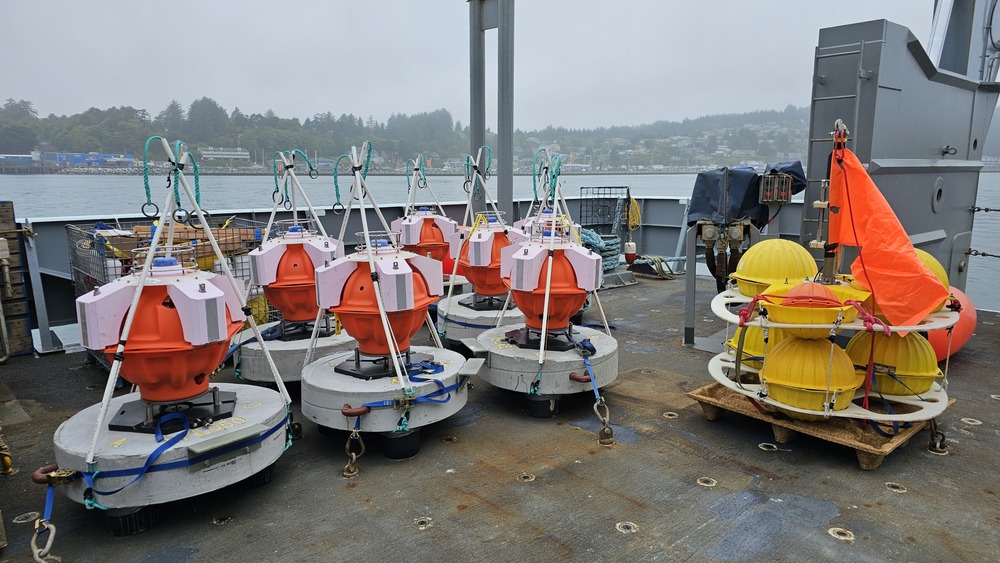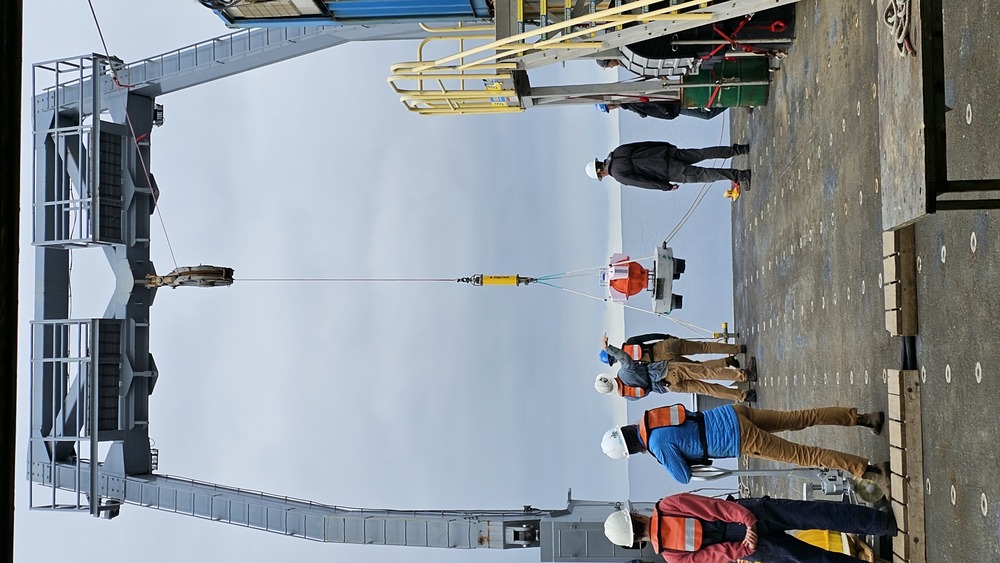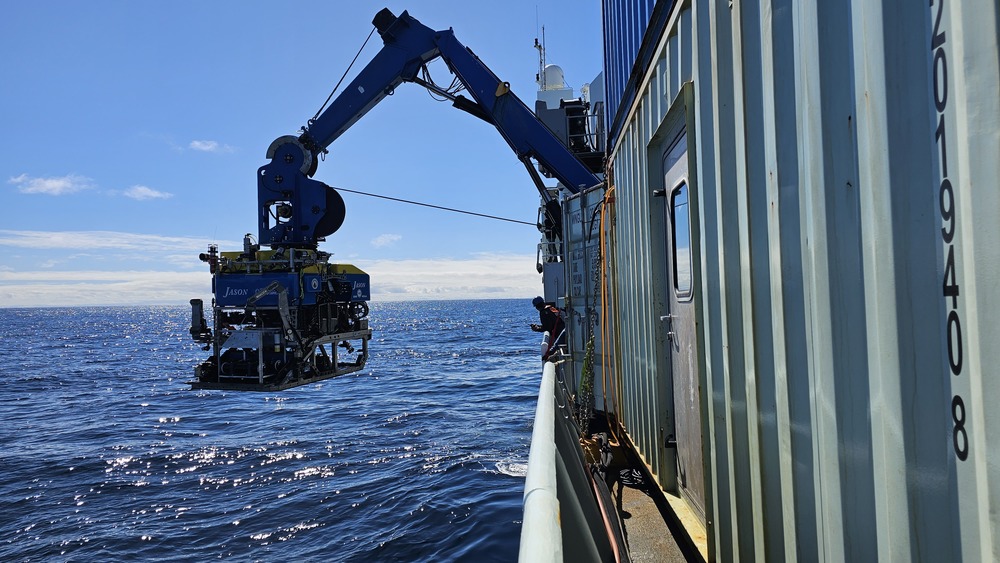Seafloor Geodesy in Alaska
My grad student, Nathalie Chavarría, and I are on-board the RV Sikuliaq at the moment deploying a bunch of transponders and a couple of autonomous surface ve...
We are nearing the end of a little boat-based field research to help understand how faults lock-up and generate some of the world’s largest earthquakes and tsunamis. Along with some cool fundamental science, we are also training some early-career scientists on how to perform similar such projects in the future. Learn more about the Near-Trench Community Experiment and follow-along on the group Blog. Below, are a few photos I took so far.
 The Thomas G. Thompson Research vessel is owned by the US Navy, managed by the University of Washington for the U.S. National Science Foundation, and docked at the NOAA and Oregon State site in Newport. Confusing, huh?
The Thomas G. Thompson Research vessel is owned by the US Navy, managed by the University of Washington for the U.S. National Science Foundation, and docked at the NOAA and Oregon State site in Newport. Confusing, huh?
 Plotting the course: Washington Scientist, John DeSanto explaining the route plan to the PIs (including me), and a varied group of early-career scientists ready to get their “sea legs”.
Plotting the course: Washington Scientist, John DeSanto explaining the route plan to the PIs (including me), and a varied group of early-career scientists ready to get their “sea legs”.
 Seafloor Transponders: Well, not yet. These 7 transponders are going to be deployed offshore Washington and Oregon to complete the network of 6 new GNSS-Acoustic stations making of the Cascadia component of the Near-trench community experiment.
Seafloor Transponders: Well, not yet. These 7 transponders are going to be deployed offshore Washington and Oregon to complete the network of 6 new GNSS-Acoustic stations making of the Cascadia component of the Near-trench community experiment.
 Pressure Drop: Not quite David Bowie-level, but one in three of each of the transponders being deployed have a pressure gauge within to measure the short-term changes in the height of the seafloor – possibly associated with very slow earthquakes.
Pressure Drop: Not quite David Bowie-level, but one in three of each of the transponders being deployed have a pressure gauge within to measure the short-term changes in the height of the seafloor – possibly associated with very slow earthquakes.
 Glider away!!! One of two autonomous surface vessels, called Wave Gliders, is over the ship and about to be let loose into the ocean for interrogating the transponders to determine their precise positions.
Glider away!!! One of two autonomous surface vessels, called Wave Gliders, is over the ship and about to be let loose into the ocean for interrogating the transponders to determine their precise positions.
 Robots at work: Wood’s Hole’s JASON Remotely Operated Vehicle (ROV) is going down to the seafloor to collect data from a different type of seafloor deformation sensor as a part of another project.
Robots at work: Wood’s Hole’s JASON Remotely Operated Vehicle (ROV) is going down to the seafloor to collect data from a different type of seafloor deformation sensor as a part of another project.
My grad student, Nathalie Chavarría, and I are on-board the RV Sikuliaq at the moment deploying a bunch of transponders and a couple of autonomous surface ve...
We just published a paper, lead by recent graduate Louisa Barama, on a machine learning method to automatically and rapidly characterize seismic signals by s...
Update: The Postdoc position is now open for applications. You can apply here, and please feel free to contact me to discuss the position.
We are nearing the end of a little boat-based field research to help understand how faults lock-up and generate some of the world’s largest earthquakes and t...
We are just now wrapping up GPS/GNSS Field work and some training along the Kivu Rift in Rwanda.
Congratulations Louisa Barama for successfully defending your PhD Thesis yesterday afternoon on “Advanced Methods for Real-Time Identification and Determinat...